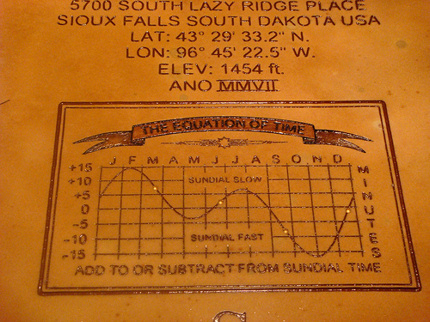Courtesy of EarthSky
A Clear Voice for Science
www.EarthSky.org

 Every year around middle April, time by the sun and the clock both agree. For instance, when the midday sun climbs highest in the sky at this time of year, the sundial reads 12:00 noon and your local clock time says 12:00 noon.
Every year around middle April, time by the sun and the clock both agree. For instance, when the midday sun climbs highest in the sky at this time of year, the sundial reads 12:00 noon and your local clock time says 12:00 noon.
Your local clock time is the same as standard clock time, as long as you live on the meridian that governs your time zone. If you live east of the time zone line, then your local time runs ahead of standard time. If you live west of the time zone line, local time lags behind standard time.
For simplicity, let us refer to places that sit right on the time zone meridian, like Denver or Philadelphia. Midday – noon by the sun – reads 12:00 noon standard time or 1:00 p.m. daylight saving time by the clock.
At present, however, the length of the day as measured by successive returns of the midday sun is slightly less than 24 hours long. This slight daily discrepancy between the clock and sun will accumulate until mid-May. Then, midday – or noon by the sundial – will come at 11:56 a.m. local clock time or 12:56 p.m. daylight saving time.
After mid-May, day length as measured by successive midday’s (sundial noons) will become slightly more than 24 hours long. By around middle June, noon by the sun and clock will agree once again.
Above photo from Carmichael’s photostream.
Related:
Looking for an astronomical almanac? EarthSky recommends . . .
Written by Bruce McClure
Other Links:
Astronomy Picture of the Day from NASA/JPL
U.S. Naval Observator Astronomical Information center
The York County Astronomical Society
 Print This Post
Print This Post








